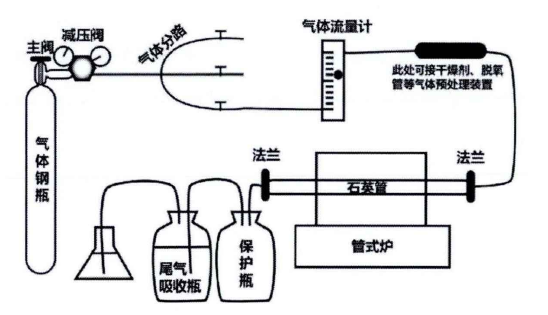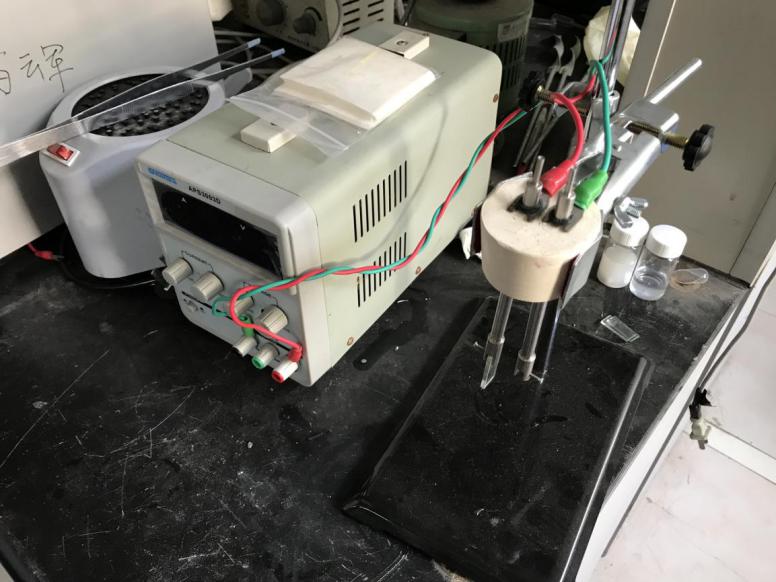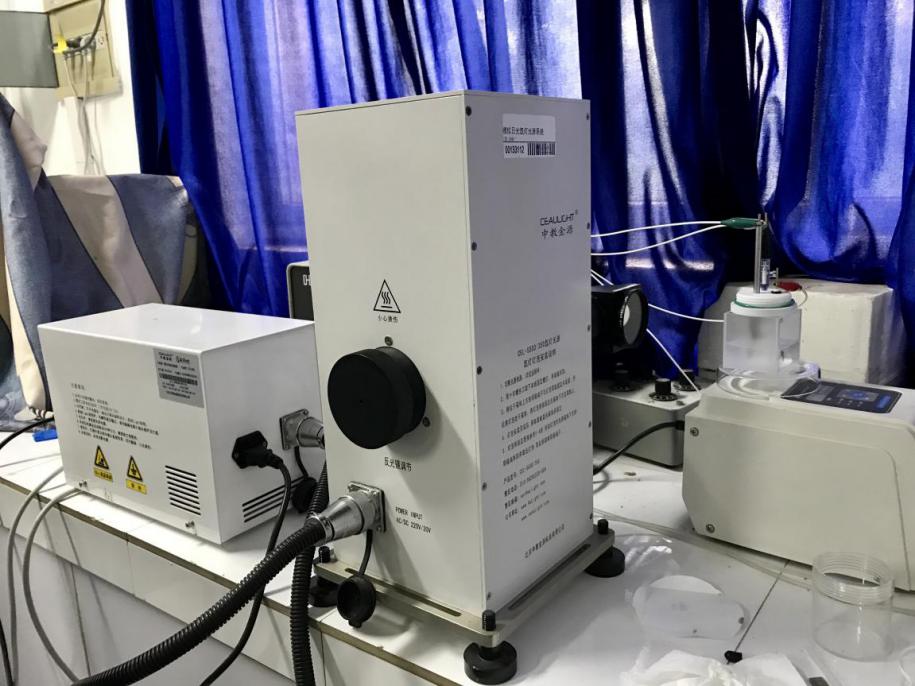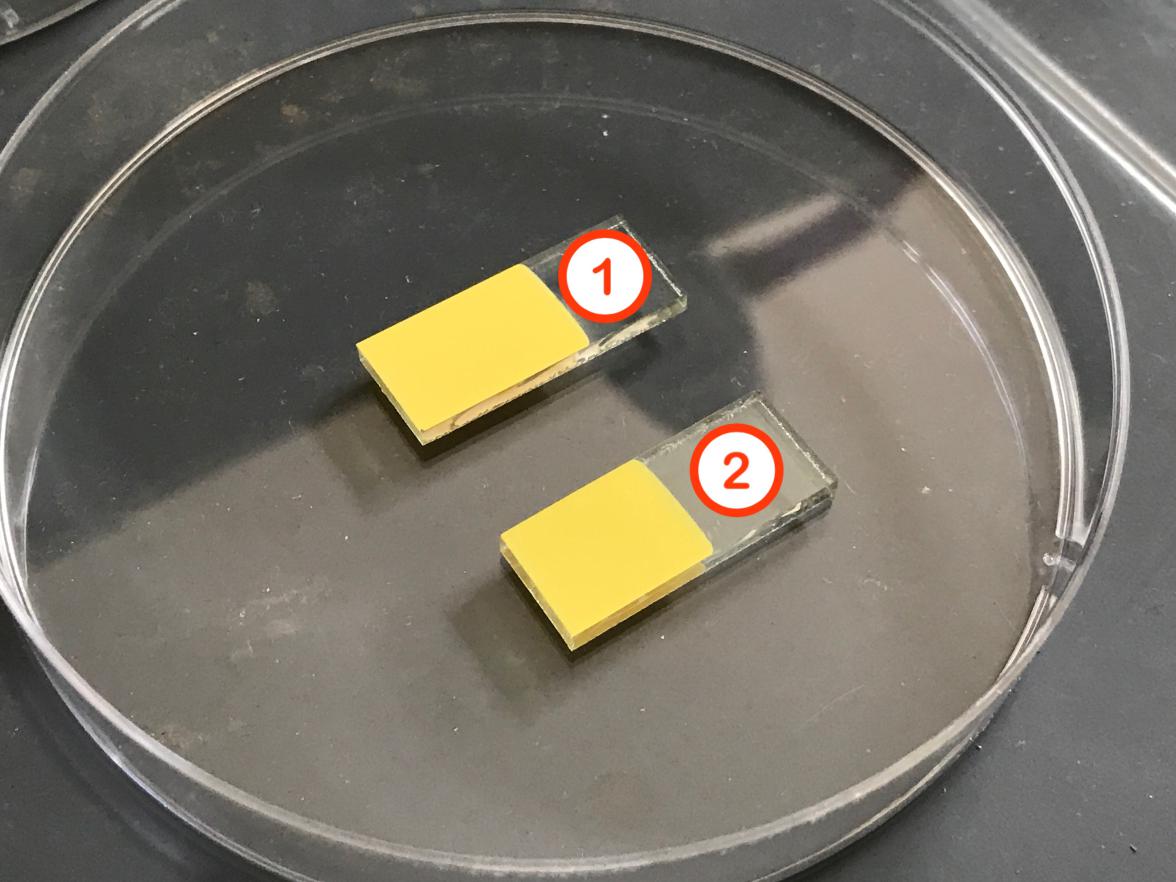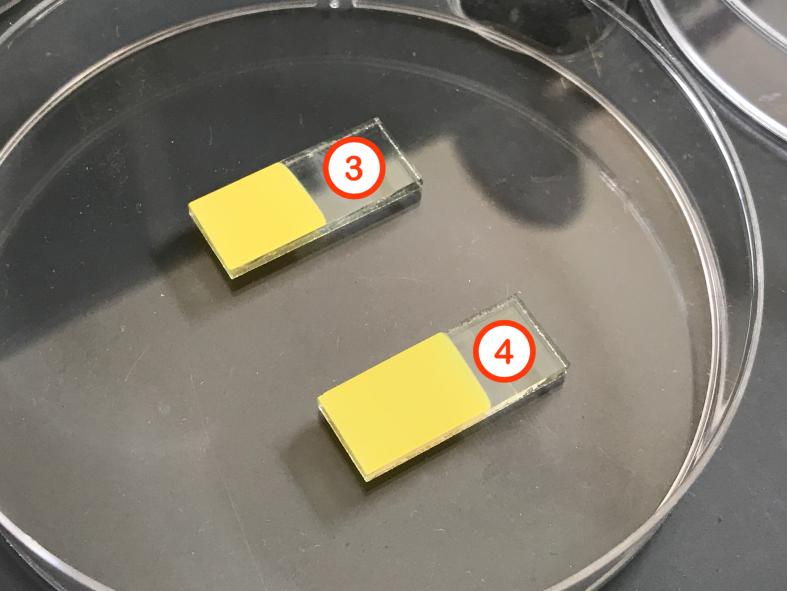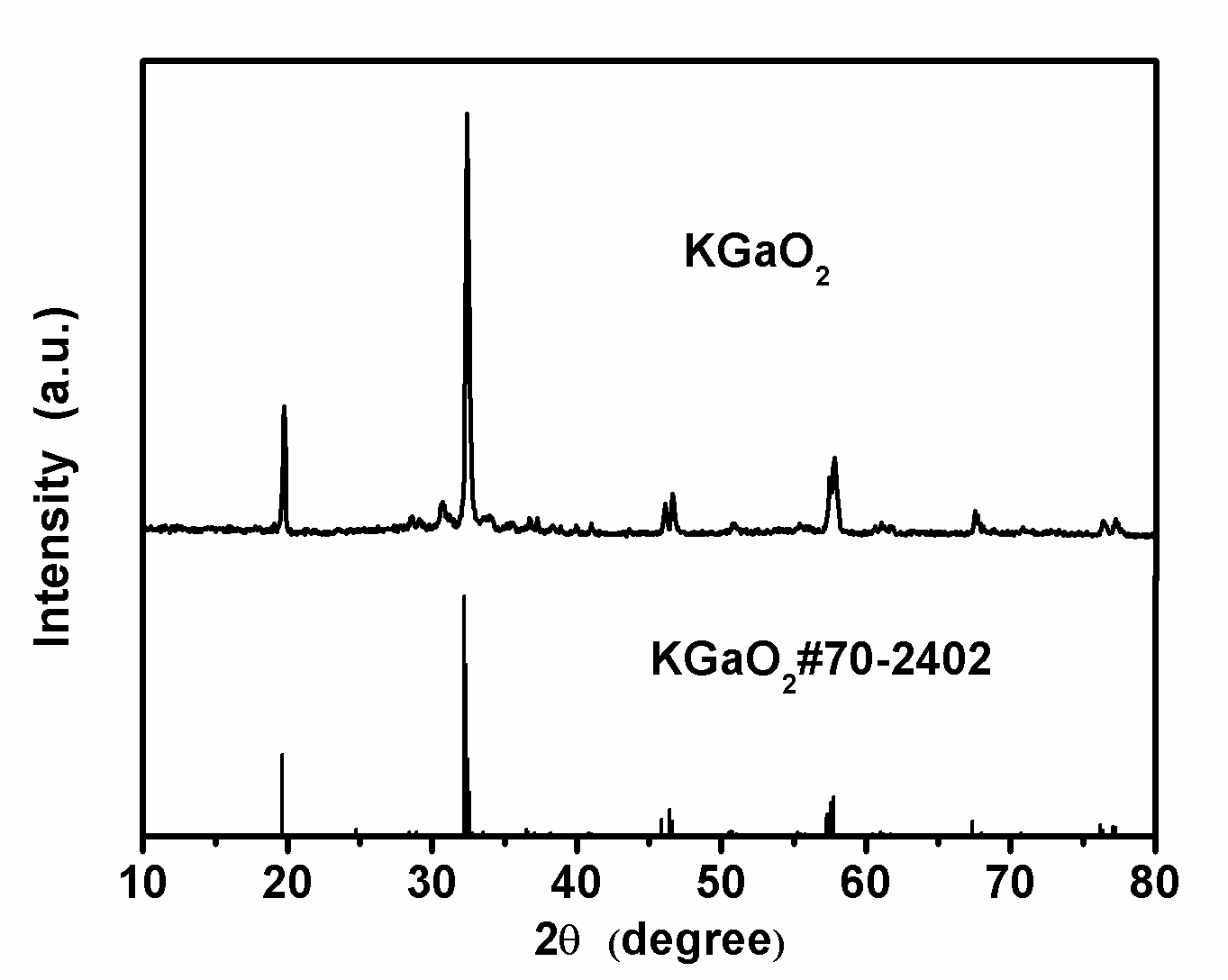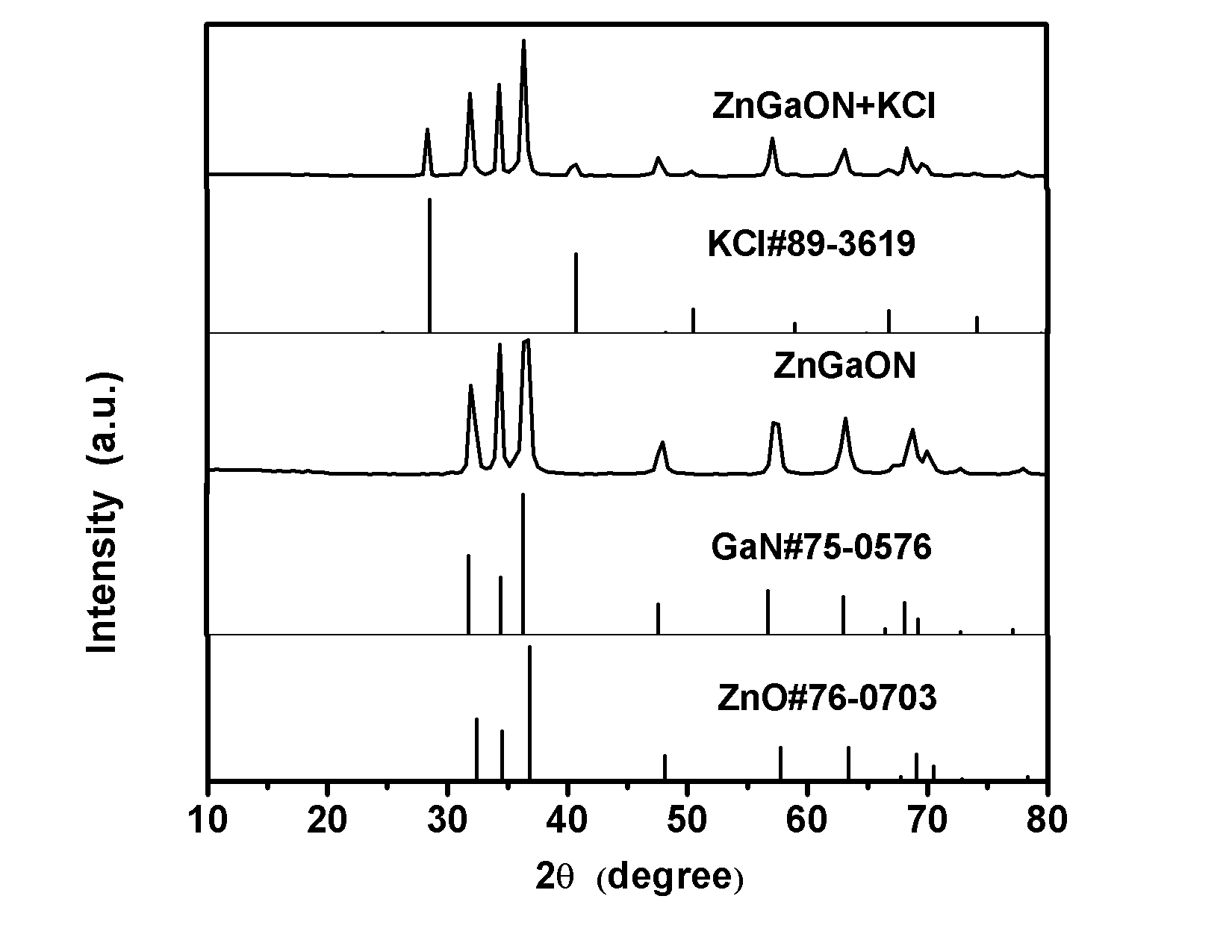氢气处理对于ZnGaON表面缺陷及其光催化性能影响的研究毕业论文
2020-07-14 22:02:46
摘 要
目前,由于化石能源大规模的开采和使用,世界面临能源和生态的双重危机。若是能够更加高效地利用太阳能,那么能源危机将得到大幅度的缓解。21世纪以来,科学家们一直致力于直接通过太阳光分解水来制氢的研究,若能将催化效果大大提高,那么上述的能源和环境危机将会迎来新的转机。因为大部分传统的光催化剂只能对紫外光有反应,而紫外光谱要比可见光光谱窄的多,因而研究可见光响应的光催化剂有重要意义。
为了提高可见光光催化材料的催化效率,本文主要研究了当下十分热门的半导体氮氧化物材料,并选取了性能优异ZnGaNO固溶体作为主要研究对象。主要工作及成果如下:
(1)在实验过程中,首先我们选择由固相烧结法和熔盐离子交换法两种途径对ZnGaNO固溶体进行制备,并对两种途径下制得的样品进行比对,而后通过电泳沉积法制备了薄膜光电极。
(2)对制备得到的样品进行了X 射线衍射分析(XRD)等相关表征。通过对衍射图谱的分析,我们发现熔盐离子交换法制得的ZnGaNO样品中掺杂了KCl,这说明了在烧制的过程中的确经过了离子交换反应。
(3)在制得的ZnGaNO样品基础上选取不同的反应温度对其进行氢气处理,然后通过XRD表征我们发现650 oC和700 oC条件下的样品还具有良好的形貌特征,而800 oC条件下的样品已经不具备与ZnGaNO相同的衍射峰了,这表明过高温度的氢气处理会破坏样品的结构。
(4)用电化学工作站和自建的光电流检测装置对薄膜光电极的光电流密度进行检测,将未经过氢气处理和经过不同条件氢气处理的样品进行对比,测试结果表明在650 oC条件下进行氢气处理后的样品光电流密度明显优于未处理和其他温度条件处理的样品。这说明用适合的条件对催化剂进行氢气处理对其光催化机能有促进作用。
关键词:光催化剂 可见光响应 氢气处理 电泳沉积 ZnGaNO固溶体
Effect of Hydrogen Treatment on Surface Defects and Photocatalytic Performance of ZnGaNO
Abstract
At present, due to the large-scale exploitation and use of fossil energy, the world faces a double crisis of energy and ecology.If the solar energy can be used more efficiently, the energy crisis will be greatly eased.Since the 21st century, scientists have been working on the research of hydrogen production by decomposing water through sunlight directly. If the catalytic efficiency is greatly enhanced, the energy and environmental crisis mentioned above will face a new turning point.Since most conventional photocatalysts can only respond to ultraviolet light, and the ultraviolet spectrum is much narrower than the visible light spectrum, the development of visible light response photocatalysts is of great significance.
In order to improve the catalytic efficiency of visible light photocatalytic materials, this article mainly studied the current very popular semiconductor oxynitride materials, and chose the ZnGaNO solid solution which has excellent performance as the main research object.The main work and achievements are as follows:
(1) In the experimental process, we first selected solid-phase sintering reaction and molten salt-ion exchange reaction for the preparation of ZnGaNO, and compared with the samples obtained under the two routes.Thin film photoelectrodes were then prepared by electrophoretic deposition.
(2) X-ray diffraction analysis (XRD) and other related characterizations were performed on the prepared samples.Through the analysis of the diffraction pattern, we found that the ZnGaNO sample prepared by the molten salt-ion exchange reaction was doped with KCl, indicating that the ion exchange reaction did occur during the firing process.
(3) On the basis of the obtained ZnGaNO sample, different reaction temperatures were selected to treat it with hydrogen, and then by XRD characterization we found that the samples at 650 oC and 700 oC also had good morphology characteristics.However, the sample with 800 oC does not have the same diffraction peak as ZnGaNO. This indicates that excessive hydrogen treatment will destroy the structure of the sample.
(4) The photocurrent of the thin-film photoelectrode was measured by an electrochemical workstation and a self-built photocurrent detection device. The samples that had not been treated with hydrogen and subjected to hydrogen treatment under different conditions were compared.The test results show that the photocurrent after hydrogen treatment at 650 oC is significantly better than that of untreated and other temperature conditions.This shows that suitable conditions for the catalyst to promote its photocatalytic performance.
Key Words: Photocatalyst;Visble light response;Hydrogen treatment;Electrophoretic deposition;ZnGaNO solid solution
目 录
摘 要 II
Abstract III
第一章 绪论 1
1.1前言 1
1.2光催化的反应机理 2
1.3半导体催化材料的研究进展 4
1.3.2 ZnGaNO材料的综述 5
1.4 ZnGaNO氢气处理 6
1.5电连接处理 7
1.6本文的研究内容及研究意义 7
1.7参考文献 8
第二章 实验技术与分析方法 10
2.1试剂与药品 10
2.2基本物性特征 11
2.2.1 X射线衍射分析(X-ray powder diffraction,XRD) 11
2.3光催化样品的制备 11
2.3.1 光催化材料的制备 11
2.3.2 光催化电极的制备 12
2.4光电性能评价装置 13
2.5参考文献 14
第三章 氢气处理对ZnGaNO表面缺陷及其光催化性能的影响 15
3.1实验部分 15
3.1.1 ZnGaNO单晶纳米棒的制备 15
3.2.2 ZnGaNO的氢气处理 16
3.3.3 电极的制备 16
3.3.4 电流的测量 19
3.2测试与表征 19
3.3结果与分析 20
3.3.1材料形貌与物相分析 20
3.3.2光电流密度的分析 23
3.3.4性能提升的原因 25
3.4本章小结 25
3.5参考文献 25
总结与展望 27
致谢 28
绪论
1.1前言
21世纪以来,世界工业化水平随着社会经济的发展得到了显著的提升,从而导致对能源的无限渴求。由于化石能源大规模的开采和使用,世界面临能源和生态的双重危机。为了缓解和治理这一局面,迫切需要寻求环保、可靠、广泛分布、可持续发展的清洁能源,成为发展中国家的新领域,必将受到世界各国的关注和重视。
相关图片展示:
